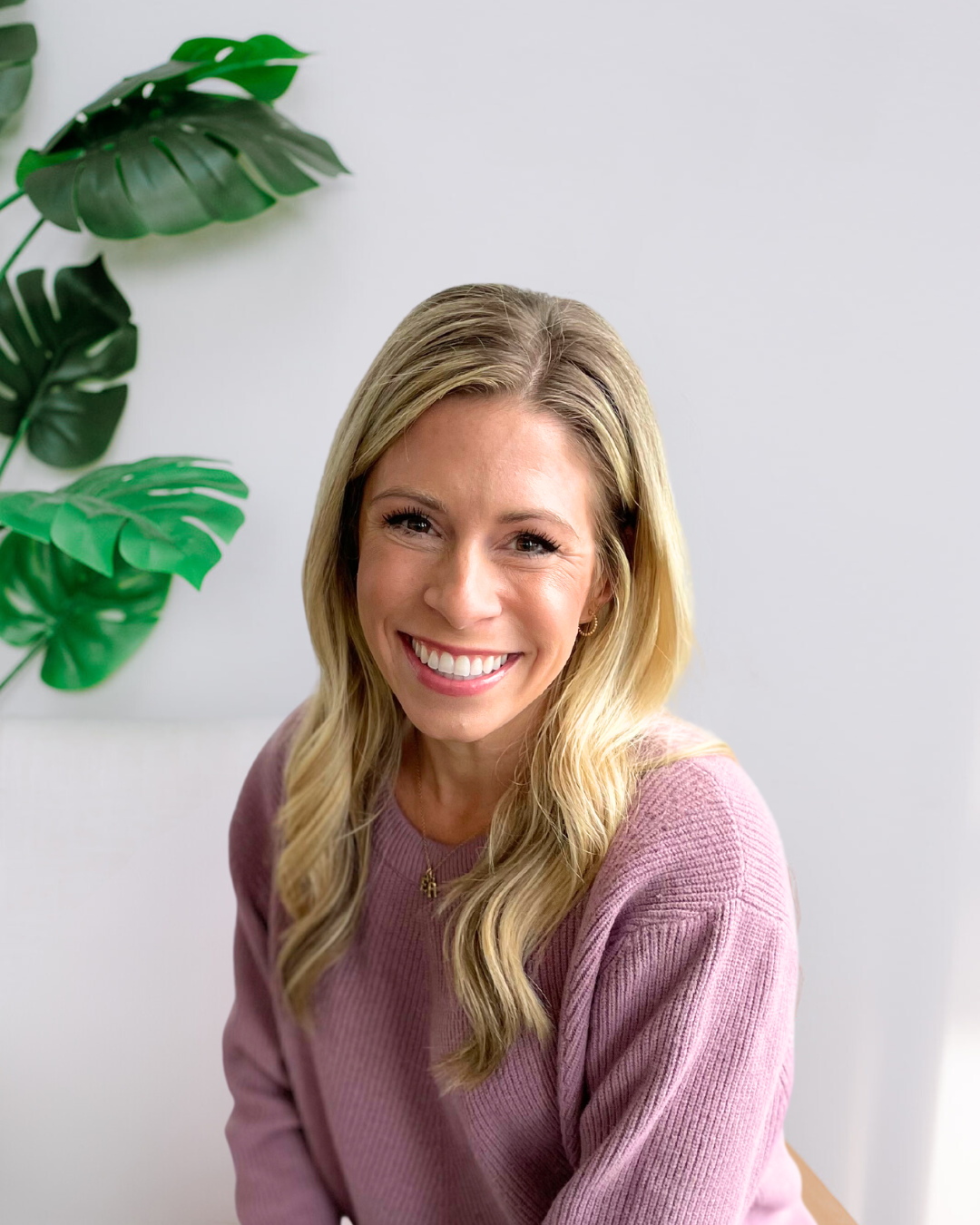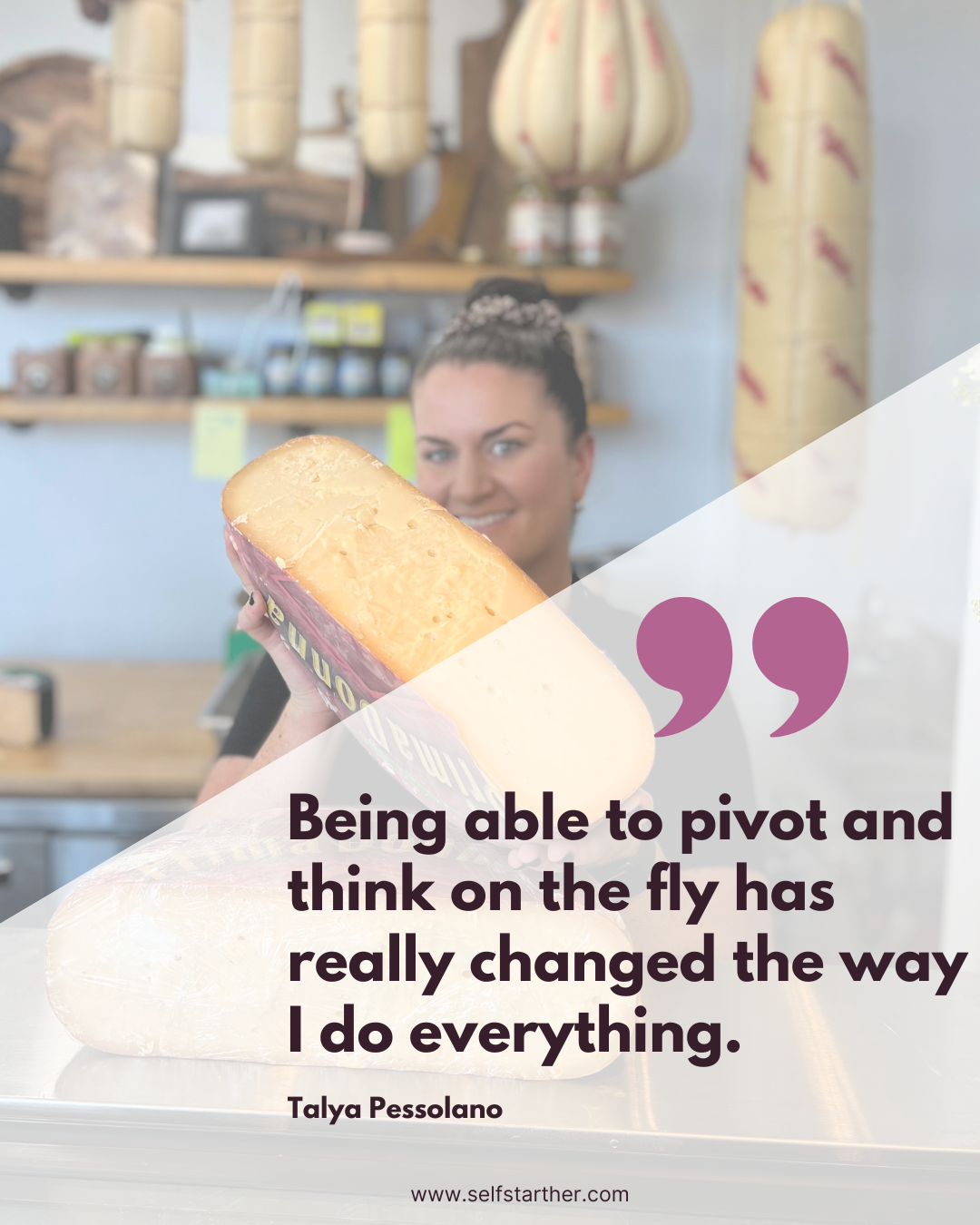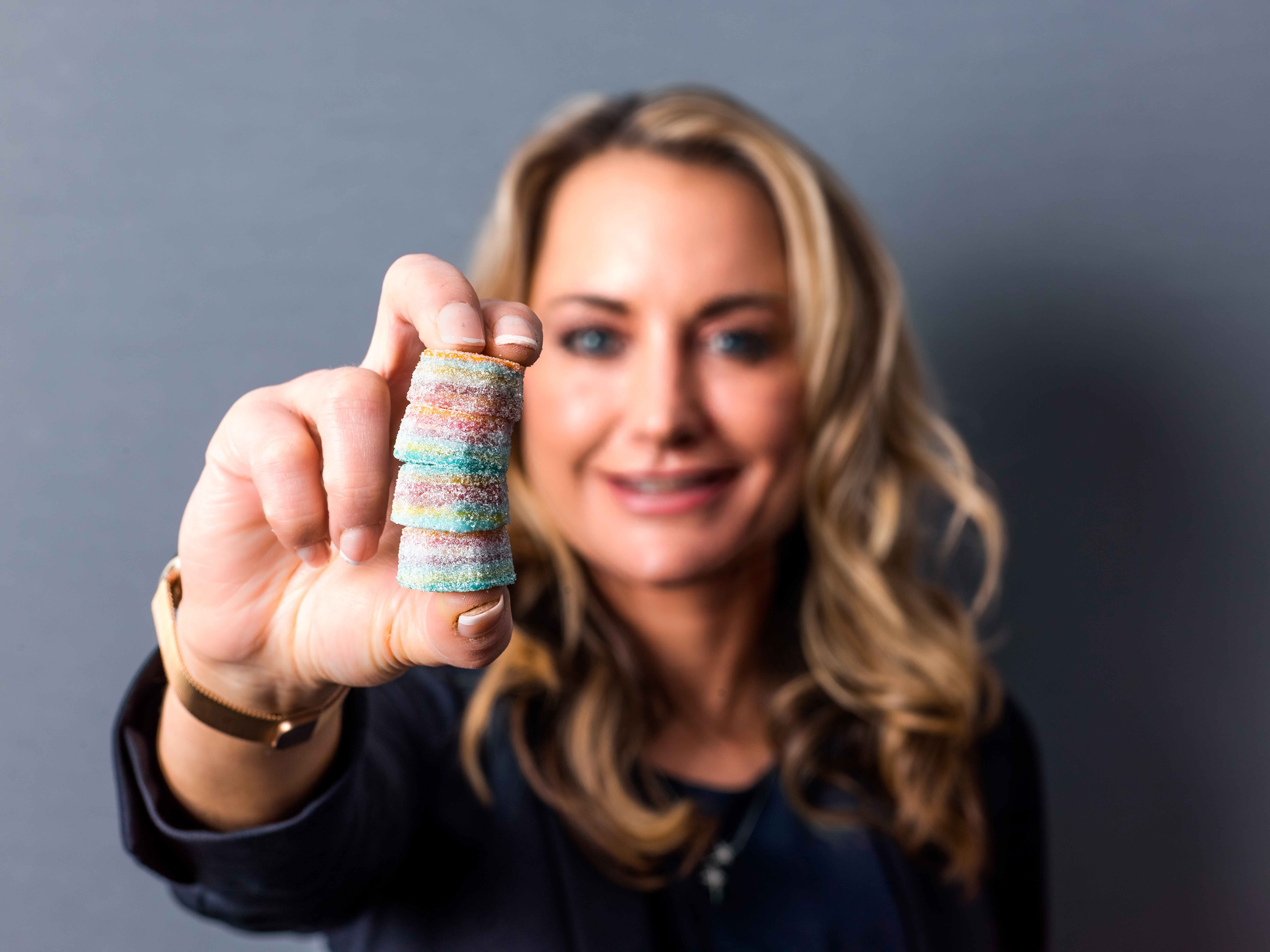Are you a creative small business owner ready to get your message out to the masses? Grab your notebook and a pen—it’s time to get creative, dream, and create a marketing strategy for your business.
Why is marketing important?
You likely aren’t new to the term “marketing”, and you understand that it’s part of running a business. But WHY is marketing so important, and better yet, why should we spend a chunk of our precious time focusing on it? Let’s dive in.
Attracts Your Ideal Client
Strategic marketing is intended to attract your ideal client, or the people that you’d love to work with and that would benefit from your product or service the most. You bring them in through your branding, messaging, and content.
By sharing who you are and what you stand for, you’re bound to attract others who resonate with you. These people understand and trust you, and they can’t wait to purchase what you offer.
Establishes You as an Authority
Ethical marketing builds trust by establishing you as an authority in your niche. Think about it—if you hear a business owner speak on a podcast, you’ll likely learn from them. You’ll trust them. You may choose to follow them on Instagram or opt in to their lead magnet. Being a guest on a podcast was part of their marketing strategy, and even just one episode, you know they’re an expert in their field.
It’s the same for other visibility strategies, too. For example, a business owner has a blog that they contribute to each week. As an audience member, you now have access to a library of their knowledge. After reading a few posts, you trust that they’re an authority because you’ve learned from them and they are consistent with their content.
Grows Your Community
One of my favorite benefits of marketing is that it fosters real community. Note that community is different from followers—you could have 100K followers, but no community. If you have a community, your audience is engaged. Your DMs are flooded with genuine conversations, and people in the comments are supportive of each other.
When you market consistently with intention and treat people like people, not like a follower number or a dollar sign, you naturally will grow your community.
Boosts Your Sales
Of course, marketing and sales go hand-in-hand! The ultimate goal of your marketing is to hit your sales goals. While that’s the “final destination”, your marketing is a never-ending journey with twists, turns, and surprises along the way.
As a marketing strategist who prioritizes ethical strategies, I firmly believe that trust equals sales. When you attract your ideal clients and they trust you, they will be excited to invest in what you have to offer. Keep this proven theory in mind as you continue to read how to develop your own marketing strategy.
4 Components of a Successful Marketing Strategy
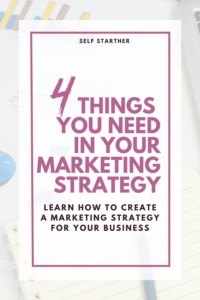
Honestly, marketing can be as simple or complex as you’d like. Some larger businesses prefer very complex software, funnels, and workflows to bring their marketing to life, while a solopreneur wants to keep things as easy as possible.
Marketing does not need to be fancy in order to be effective. You don’t need to invest in expensive tech in order to market your business, but there are 4 components that I believe lead to a successful marketing strategy.
Please note that we’re focusing on an organic marketing strategy (not paid ads) here, but once you find what works for your unique business, feel free to add paid ads into the mix!

1. Visibility
Visibility is the first component of a marketing strategy, and this is what typically comes to mind when you think of marketing. Visibility is getting the word out about what you do and who you serve, in order to attract more people into your world. It’s ensuring that you reach the eyes and ears of your ideal client, so they become aware of you.
Before choosing a visibility strategy, be crystal clear WHO your ideal client is and exactly what you help them with. Use language that they’d resonate with—which may or may not be different from your niche-specific language. If you’re stuck on this, hop on quick calls with 5 people who are ideal clients. Ask them questions to learn more about their struggles and dreams, and use that messaging in your marketing.
There are lots of different routes you can take when it comes to your visibility. The most obvious option is social media. Social media is an incredible (and free!) way to get your message out to the masses. In addition to social media, you can start a podcast or be a guest on other podcasts, write blog posts, create YouTube videos, or attend in-person networking events.
If visibility overwhelms you, remember that you don’t need to focus on all these areas. That’s likely not feasible for you! Instead, choose 1-3 options that you know you can stay consistent with, and give yourself some attainable goals. For example, aim to post on Instagram 3x per week, blog biweekly, and be a guest on a podcast once per quarter. If you’d like to discover which visibility strategy is best for you in this season, click here to take my free quiz!
Another tip here is don’t be afraid to experiment with your visibility strategies. They likely WILL change over time once you start seeing what’s working, what’s not, and how much time everything takes you.
If Instagram sucks up all your time but your inquiries typically come from blogging/SEO efforts, then it would make sense to scale back a little on your Instagram posts and fuel the fire of your blog.
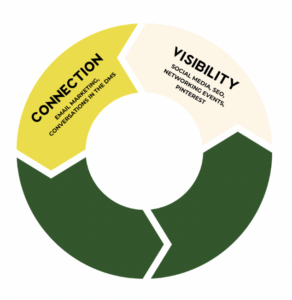
2. Connection
Going viral for the sake of more views or followers isn’t really worth your time, unless you know how to harness it. That example is exactly why marketing does not stop at visibility! Yes, we want you to have more eyeballs on your work, but what those viewers do next is important.
Now, it’s time to build some connections. My favorite way to do this is by building and nurturing an email list. If you don’t have an email list yet, I highly recommend starting a free 30-day trial with Flodesk, the email marketing provider I LOVE (especially for beginners). This link will get you that free trial and 50% off your first year!
Once you have an email list started, offer something for free (called a lead magnet or freebie) in exchange for someone joining your email list. This could be a PDF guide, checklist, template, quiz, mini course, email challenge, etc. Think about what your ideal client would value, and focus on getting them a quick win through this freebie.
The goal is to move people from your visibility platform onto your email list. You can do this by using calls-to-action, or CTAs, in your content. The people on your email list are your most engaged audience members, so nurture them! Be vulnerable, share exclusive offers, and tell stories.
Another way to build connections outside of your email list is within the DMs. Be an account that encourages deep connections with your followers, and don’t be afraid to take the first step! Follow your ideal clients back, and respond to their stories in a natural way. Engage with those who engage with you, and this can lead to genuine relationships over time.
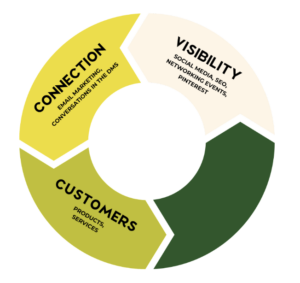
3. Customers
This would not be an effective marketing strategy if we didn’t discuss sales. As much as I prioritize connection and community building, you wouldn’t have a business without sales. So, how do you turn those followers and email list subscribers into customers?
You need to sell—but it doesn’t have to be salesy. Simply extend the invitation, on Instagram stories, as CTAs in your content, and ESPECIALLY within your emails. My favorite way of doing this is starting with a story or something totally unrelated to business, then adding a segue into an offer.
People love to buy, but they don’t like to be sold to. Think about the difference. When someone trusts you and feels like you understand their needs and dreams (aka, you are speaking the same language as your ideal client), they feel empowered to buy what you have to offer. They’re even excited about it! But, you must extend the invitation.
Think of selling to your audience in both passive and active ways. Passive ways include having a link to work with you in your Instagram bio, highlights, and of course on your website. Active selling is sending personal invitations to work with you via DMs (only do this if you have a very strong relationship established), talking about your offers on stories, and using more intentional CTAs to buy or join in your content and emails.
Create a game plan for selling your offers. Personally, I like to make sure I’m sharing some sort of information on how we can work together on Instagram stories at least 3x per week. My weekly blog posts always include a CTA to read about my services and/or inquire, and many of my weekly emails have a link to inquire as well. Once you get into the habit of sharing your offers consistently in a variety of ways, it will become second nature for you.

4. Flywheel
Have you ever heard of a funnel when it comes to marketing? Typically the funnel starts when someone first becomes aware of you, and it ends when someone books your service or buys your product. Funnels aren’t inherently bad, but I like to take things a step further with the flywheel.
The flywheel marketing approach compounds your efforts and creates momentum. It’s always attracting, engaging, and converting your ideal clients, turning them into your own raving fans that attract, engage, and convert others for you.
Think about how you can keep clients or customers in your orbit even after purchase. Could you create an ambassador, referral, or loyalty program? Add in an incentive for people to take part, like free or discounted products, exclusive events, or prizes. The key is making this a mutually beneficial experience for everyone involved.
While you can strategically put these things in place for your business, creating a positive client experience should naturally encourage others to refer their friends to you, thus building momentum and boosting the flywheel effect. So if you don’t have the bandwidth for anything fancy here, prioritize a phenomenal client experience.
How to Start Marketing Your Business
Do you feel excited to start marketing your business? Were you able to pinpoint areas where you could expand or improve your marketing efforts? I hope this post inspired you to dive deeper into these 4 components of your marketing strategy.
If you’d like to partner with a marketing strategist to nail down a strategy that feels aligned to your business and life, that’s something we could cover during a 60-minute strategy session! That time is yours to ask questions and find clarity on how all these pieces work together. Click here to schedule your session!
*If you book a session with Karley, be sure to mention you were sent from Self StartHER and you’ll receive a special bonus
About the Author:

Karley is an engineer turned marketing strategist and founder of Bud to Bloom Marketing. In her ethical marketing business, she serves online and local businesses through tailor-made strategies that treat people like people and not potential dollar signs. She lives in Maryland with her husband and two pups and loves hiking, reading, local coffee shops, and jamming out to Taylor Swift.



